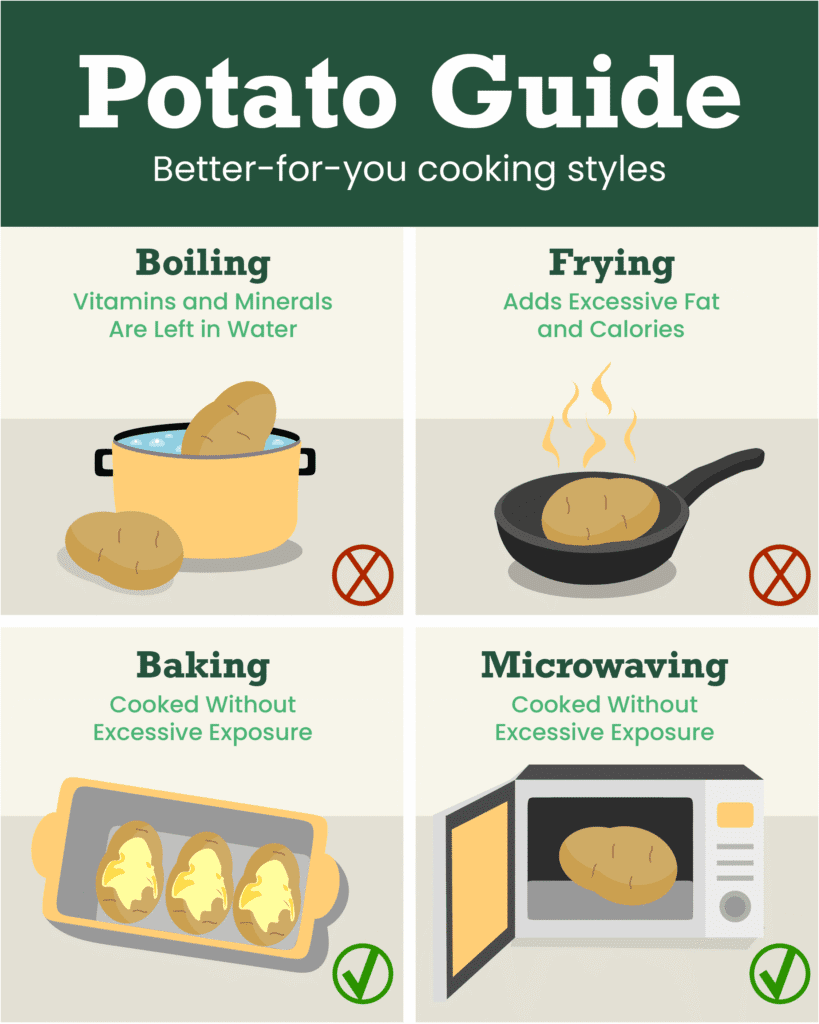Best Ways to Cook Potatoes Without Sacrificing Nutrients
Potatoes are one of the most versatile ingredients in kitchens around the world—but not all cooking methods are created equal when it comes to nutrition. While they’re often unfairly labeled as “unhealthy,” potatoes are actually packed with essential nutrients like vitamin C, potassium, and fiber—if prepared the right way. In this guide, we’ll break down the most common ways to cook potatoes and how each method affects their nutritional value. Whether you’re meal prepping for the week or making a quick side dish, here’s how to get the most out of your spuds—without sacrificing taste or health!

Methods That Cost You Nutrients
Boiling Potatoes
Boiling is one of the most common ways to cook potatoes, especially for mashed dishes or salads. While it’s quick and easy, boiling can cause some water-soluble nutrients—like vitamin C and certain B vitamins—to leach into the water. That said, boiling with the skin on helps preserve more of the potato’s fiber and micronutrients. It’s still a healthy method, especially if you’re limiting added fats, but not the most nutrient-retaining option on its own.
Frying Potatoes
Frying, whether deep or pan-fried, adds a crispy, golden texture that’s hard to resist. However, this method significantly increases the calorie and fat content—especially when using oils high in saturated fats. Nutritionally, frying is the least beneficial method for preparing potatoes, as it adds extra calories without boosting nutrient value. If you’re going to fry, using heart-healthy oils like olive or avocado oil and air-frying instead of deep-frying can make a big difference.
Nutrient-Packed Cooking Methods
Baked Potatoes
Baking is one of the best ways to cook potatoes, while preserving its natural nutrients. Since there’s no added water or oil involved, vitamins and minerals remain mostly intact—especially if you leave the skin on. A baked potato is rich in fiber, potassium, and vitamin C, and when topped wisely (think Greek yogurt or herbs instead of sour cream and bacon), it makes for a hearty, nutrient-dense option. Baking also allows for easy portion control and pairing with other whole-food toppings, making it a solid go-to for balanced meals.
Microwaving Potatoes
Microwaving might seem like a shortcut, but it’s actually one of the most efficient ways to retain nutrients in potatoes. The short cooking time and minimal use of water help preserve water-soluble vitamins better than boiling. Plus, it’s quick and requires no added fat. Just pierce the skin, pop the potato in, and cook until tender. It’s perfect for busy days when you still want a nutritious, whole-food option. For added benefits, microwave with the skin on and season with heart-healthy herbs and spices.
Final Thoughts: Cooking for Nutrition
Potatoes are a wholesome, nutrient-rich food that deserve a spot in any balanced diet—but how you cook them can make a big difference in what your body gets out of them. Whether you’re baking, boiling, microwaving, or even occasionally frying, each method affects the nutritional value in its own way. Choosing cooking styles that preserve more vitamins and minerals—like baking or microwaving—can help you get the most out of this humble root vegetable. At the end of the day, it’s all about balance and making small choices that add up to better health!
